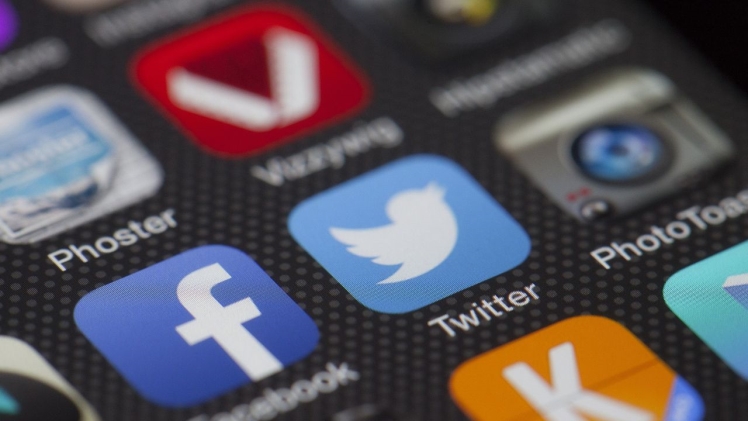Introduction:
In the digital age, social media has emerged as a transformative force, redefining the way we connect, communicate, and consume information. This article embarks on a journey through the dynamic landscape of social media, tracing its evolution, examining its pervasive influence on society, exploring its diverse platforms, and delving into both the positive and challenging aspects of this interconnected virtual realm.
The Dawn of Social Media: A Historical Perspective
The roots of social media can be traced back to the early days of the internet, with platforms like Six Degrees (1997) considered the first social networking site. However, it was the advent of platforms like Friendster (2002), MySpace (2003), and eventually Facebook (2004) that marked a seismic shift in how people engaged online.
-
- Friendster and MySpace: These early platforms laid the groundwork for the concept of connecting with friends, sharing updates, and building virtual profiles. However, their popularity waned with the rise of more user-friendly and feature-rich platforms.
- Facebook’s Rise to Dominance: Mark Zuckerberg’s creation, Facebook, quickly became a global phenomenon, reaching beyond college campuses to connect people worldwide. The introduction of the News Feed in 2006 transformed how users consumed content, paving the way for the social media ecosystem we know today.
Diverse Platforms: The Social Media Tapestry Unfurls
The social media landscape is a rich tapestry woven with platforms catering to various interests, demographics, and modes of expression.
-
- Instagram: Launched in 2010, Instagram brought visual storytelling to the forefront. Focused on photo and video sharing, it quickly gained popularity, especially among younger users and those with a penchant for visual content.
- Twitter: Known for its real-time, concise communication, Twitter (2006) revolutionized the way information is disseminated. The platform’s character limit challenged users to distill thoughts into bite-sized updates, fostering trends, and enabling rapid global conversations.
- LinkedIn: Catering to the professional sphere, LinkedIn (2003) emerged as the go-to platform for networking, job hunting, and industry updates. It transformed the way professionals build and leverage their online presence.
- Snapchat: Targeting younger audiences, Snapchat (2011) introduced ephemeral content—photos and videos that disappear after a set time. Its innovative features, including Stories and Filters, influenced trends across the social media landscape.
- TikTok: The rise of TikTok (2016) brought short-form video content to the forefront. Its algorithm-driven, engaging platform catapulted it into global stardom, particularly among younger users.
Impact on Communication: Redefining Connection in the Digital Era
Social media has fundamentally altered the way we communicate, breaking down geographical barriers and creating virtual communities.
-
- Instant Communication: Real-time communication through messaging apps, comments, and replies has become the norm. Platforms like WhatsApp, Messenger, and Direct Messages on Twitter facilitate instant connection across the globe.
- Global Conversations: Social media has transformed discussions on a global scale. Hashtags, trending topics, and viral content amplify voices, mobilize movements, and bring attention to social and political issues.
- Personal Branding: Individuals and businesses alike use social media for personal branding. Platforms provide a space for crafting and curating online identities, shaping public perception, and establishing expertise.
Influence on Culture: Shaping Trends and Narratives
Social media’s influence extends beyond communication, actively shaping cultural trends, fostering creativity, and influencing societal narratives.
-
- Influencer Culture: The rise of influencers—individuals who amass large followings and wield influence over their audience—has become a defining aspect of social media. Influencers impact consumer behavior, promote trends, and shape popular culture.
- Viral Challenges and Memes: Social media is a breeding ground for viral challenges and memes that quickly permeate global consciousness. From dance challenges on TikTok to image macros on Twitter, these phenomena reflect the participatory nature of online culture.
- Cultural Movements: Social media plays a crucial role in mobilizing and amplifying cultural movements. From #MeToo to #BlackLivesMatter, these movements gain momentum through social media, fostering awareness, solidarity, and societal change.
Challenges and Concerns: Navigating the Dark Side of Social Media
While social media has brought about numerous positive changes, it also grapples with challenges and concerns that have sparked debates about privacy, mental health, and misinformation.
-
- Privacy Concerns: The collection and use of personal data by social media platforms have raised concerns about privacy. Instances of data breaches and unauthorized access have prompted discussions about the need for stronger privacy regulations.
- Mental Health Impact: The constant stream of curated content, comparison culture, and online bullying contribute to mental health challenges, especially among younger users. Social media platforms are under scrutiny for their role in perpetuating unrealistic beauty standards and fostering anxiety.
- Misinformation and Disinformation: The rapid spread of misinformation and disinformation on social media poses a significant threat. False narratives, fake news, and the manipulation of information can have far-reaching consequences, affecting elections, public opinion, and public health.
Evolving Business Landscape: Social Media as a Marketing Tool
Social media has transformed the business landscape, providing a powerful platform for marketing, brand building, and customer engagement.
-
- Brand Presence: Social media is an integral component of brand strategy. Companies use platforms to build brand identity, engage with audiences, and showcase products or services.
- Influencer Marketing: Collaborations with influencers have become a staple of modern marketing. Influencers bring authenticity and relatability, providing businesses with an effective way to connect with target audiences.
- E-Commerce Integration: Social media platforms increasingly integrate e-commerce features, allowing businesses to sell products directly to users. Instagram Shopping, Facebook Marketplace, and Pinterest Shopping are examples of this trend.
Technological Advancements: The Next Frontier of Social Media
Technological innovations continue to shape the trajectory of social media, introducing features that enhance user experience and open new possibilities.
-
- Augmented Reality (AR) and Virtual Reality (VR): AR and VR technologies are increasingly integrated into social media platforms, offering immersive experiences. From AR filters on Instagram to VR live events on Facebook, these technologies redefine user engagement.
- Artificial Intelligence (AI): AI plays a crucial role in content moderation, personalization algorithms, and trend predictions. It enhances user experience by tailoring content to individual preferences and automating certain functions.
- Blockchain and Decentralization: Some emerging platforms explore blockchain technology for enhanced security, transparency, and user control. Decentralized social networks aim to give users ownership of their data and reduce reliance on centralized authorities.
The Future of Social Media: Navigating Opportunities and Responsibilities
As social media continues to evolve, its future holds both exciting opportunities and ethical considerations.
-
- Social Media and Civic Engagement: Social media’s role in civic engagement is likely to expand. Platforms will play a pivotal role in disseminating information, mobilizing communities, and fostering political participation.





